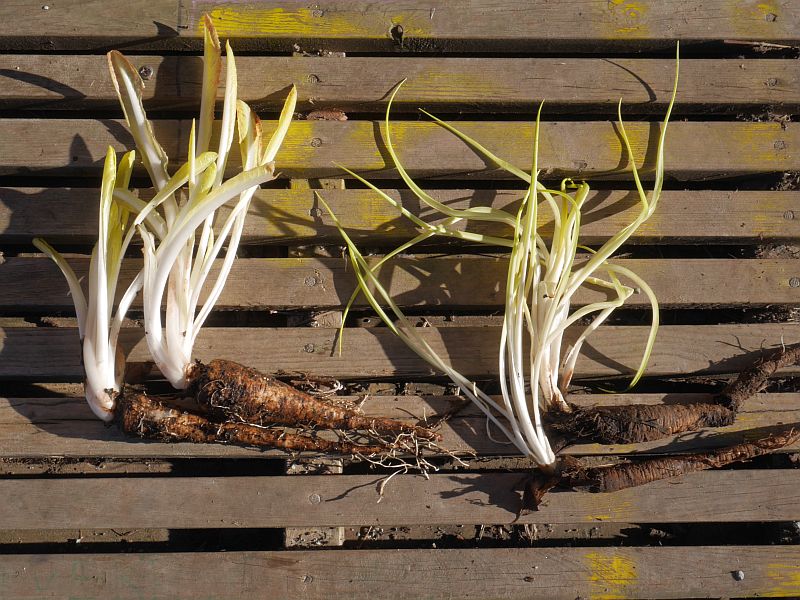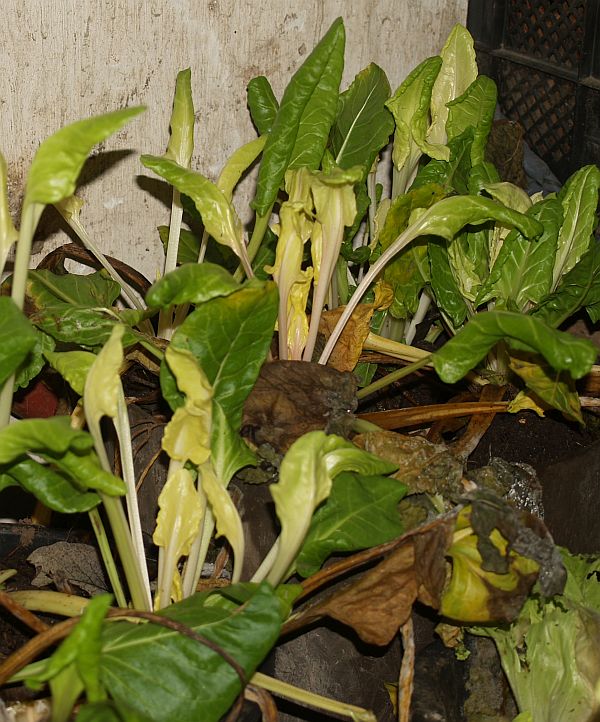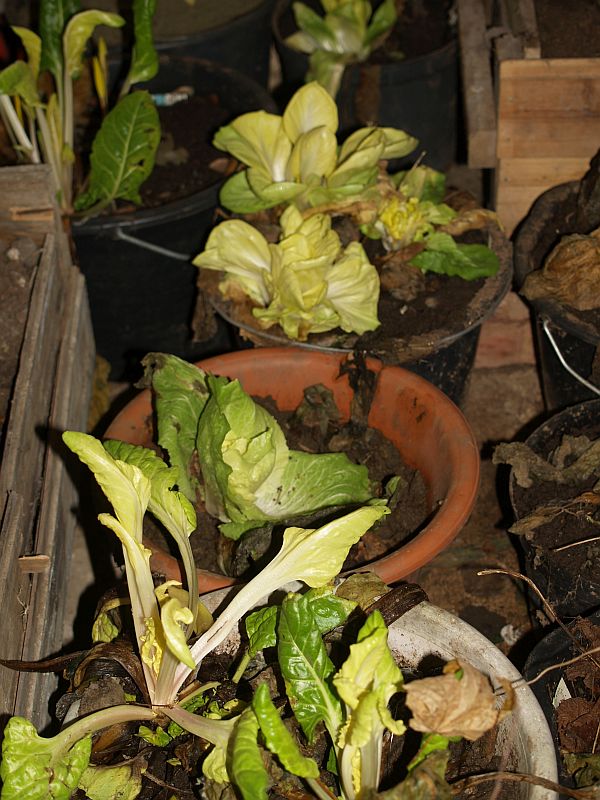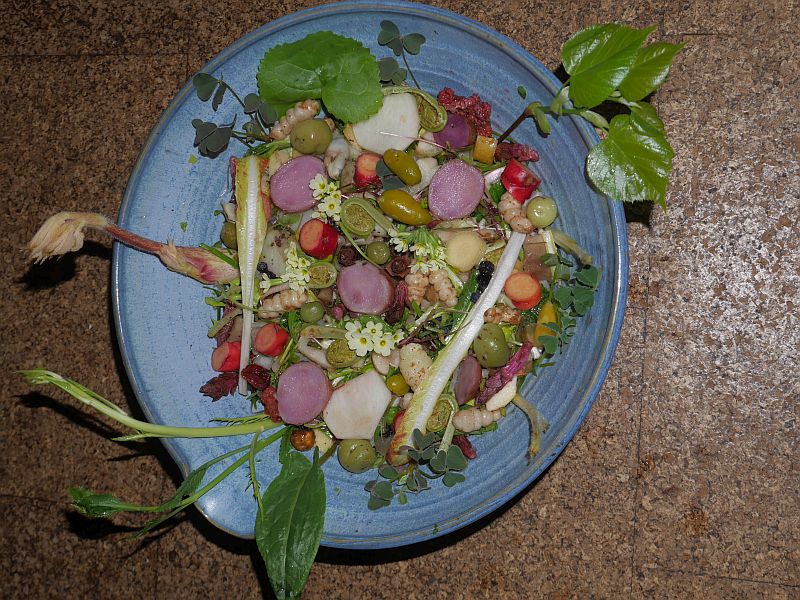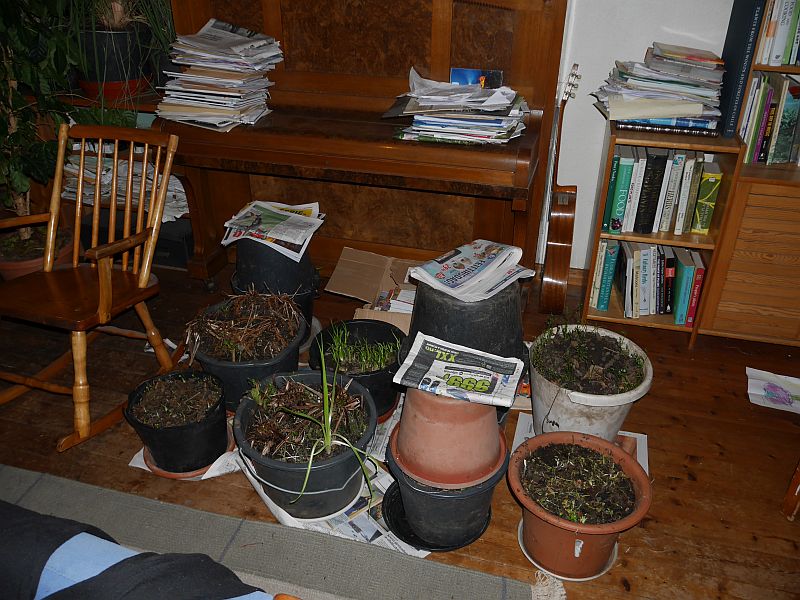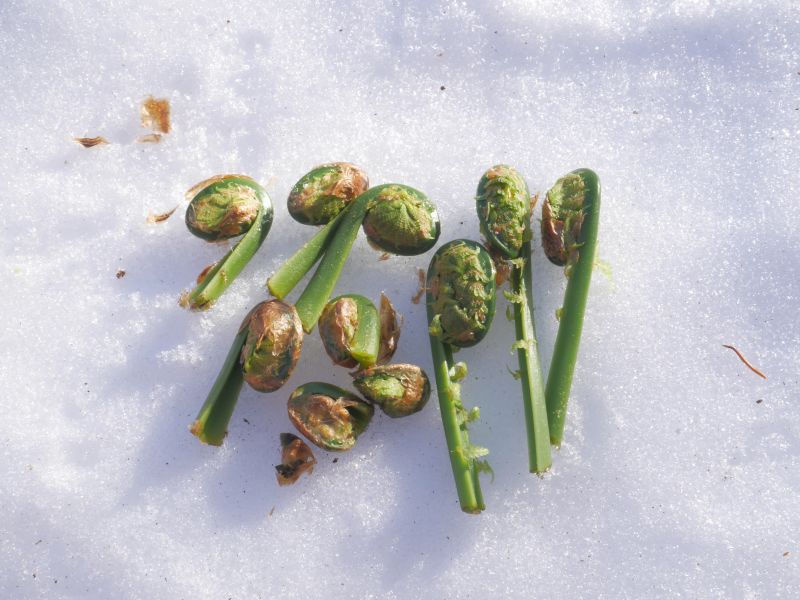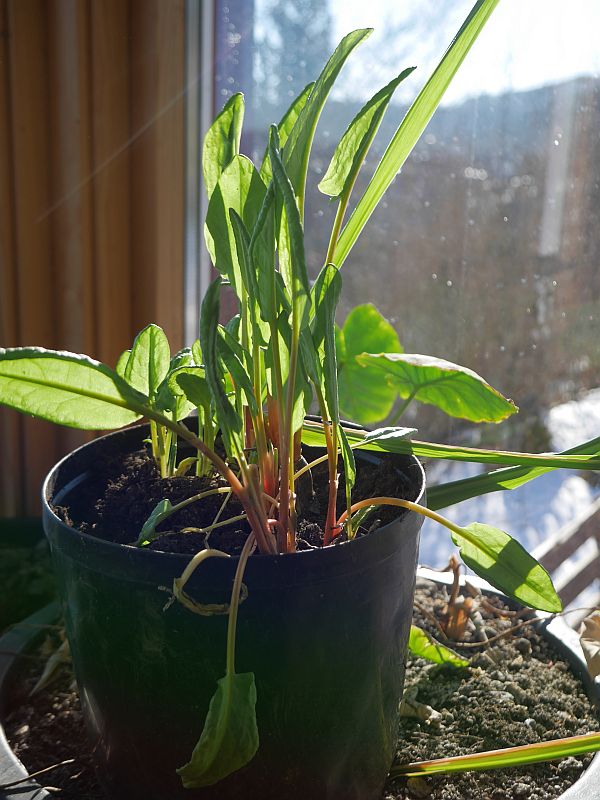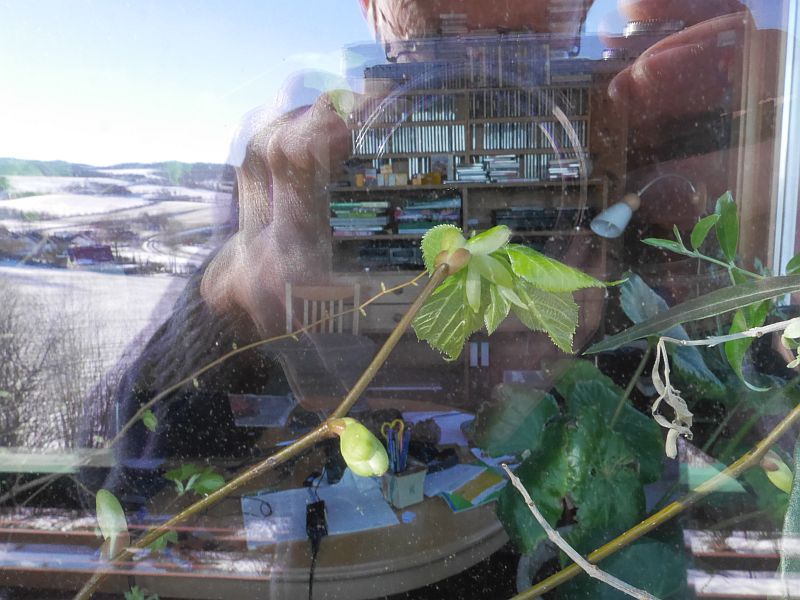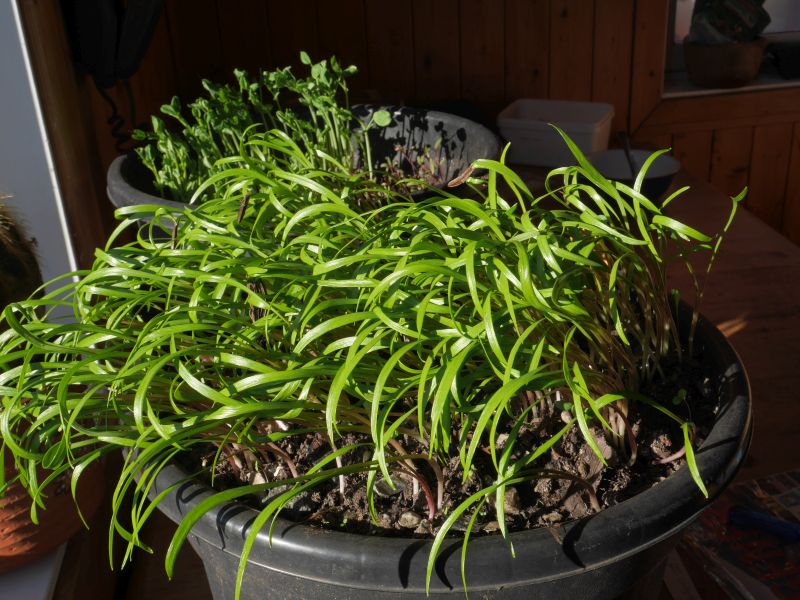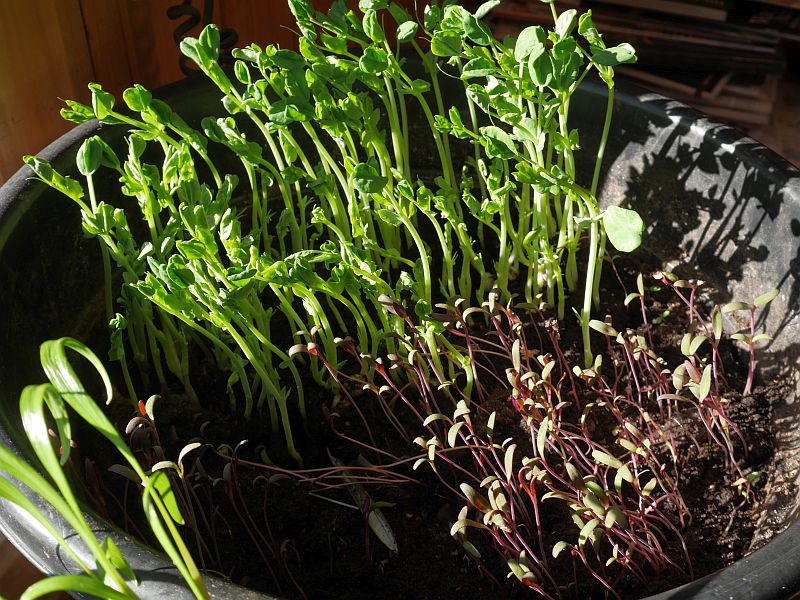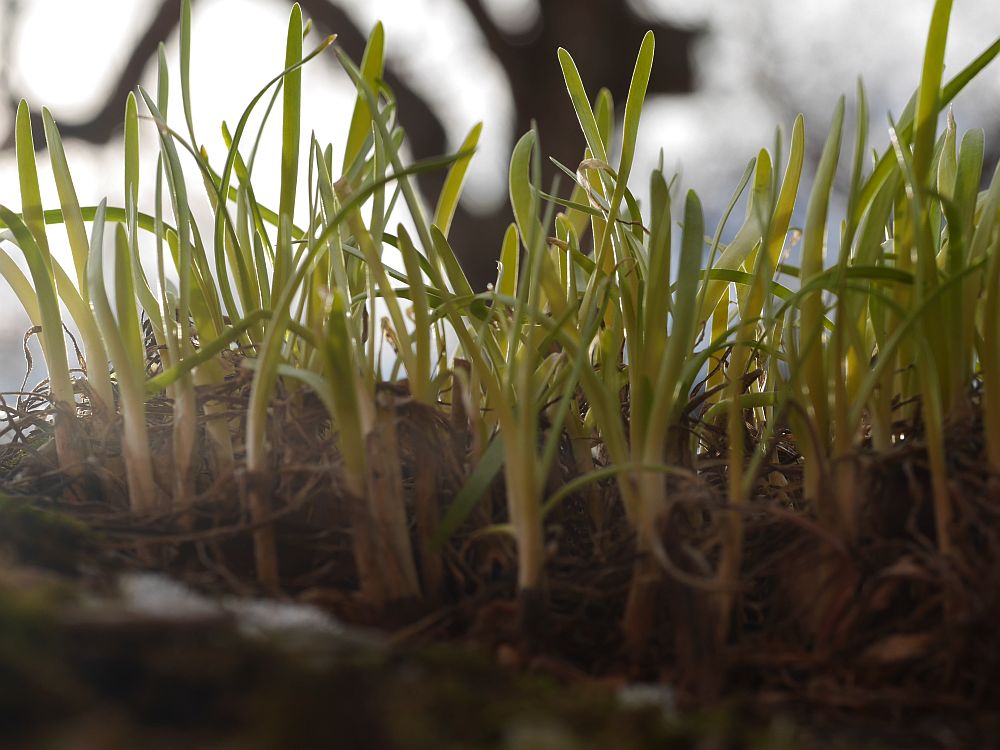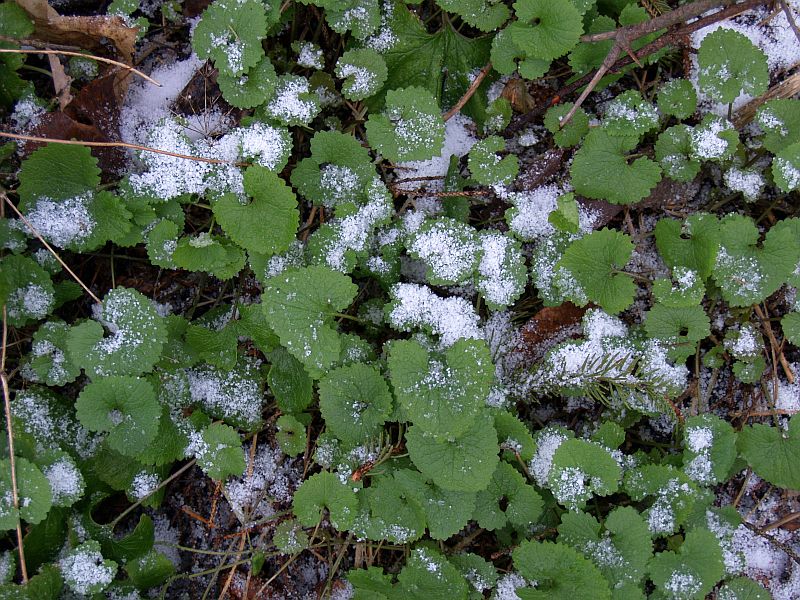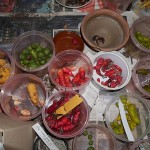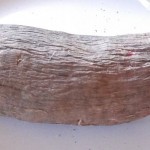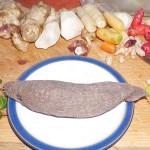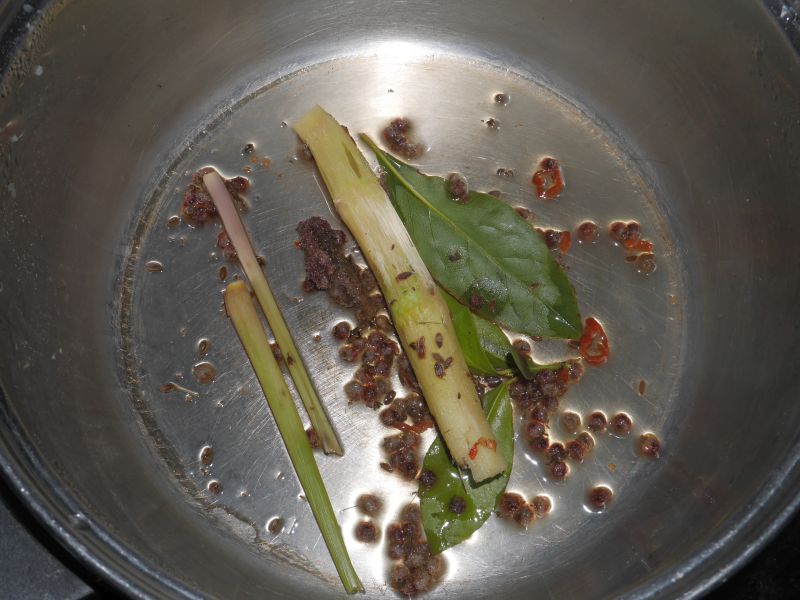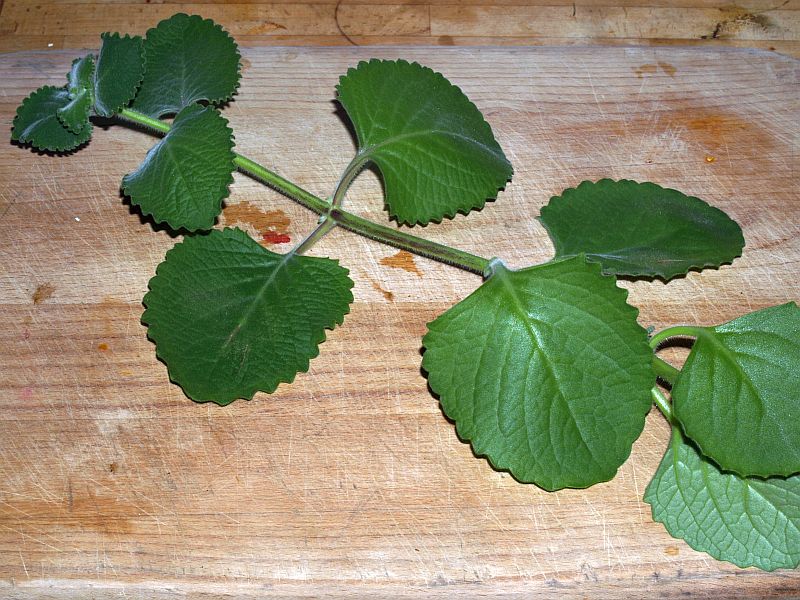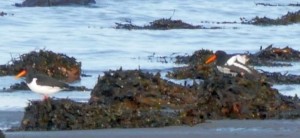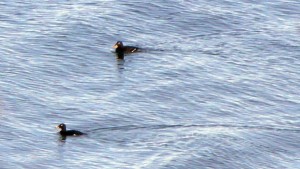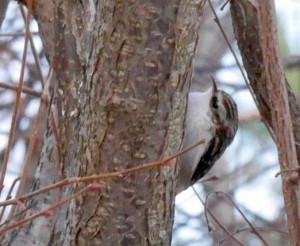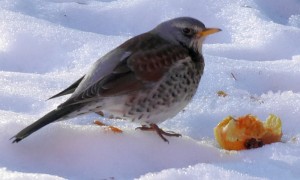I had already agreed in the autumn to take part in the culinary program of this year’s Kosmorama Film Festival in Trondheim in collaboration with the leading restaurant Credo. I therefore made my plans to make a diversity salad back then by moving roots and plants of perennials, that I could force early to be ready to harvest in early March, into my cold cellar. The cellar is basically 4 unheated full size rooms under the house which, in a normal winter, are around 2-4C, perfect for storing vegetables.
Other connected posts:
The Credo/Kosmorama diversity dinner: http://www.edimentals.com/blog/?p=10138
The Credo/ Kosmorama Extreme salad (with 105 ingredients): http://www.edimentals.com/blog/?p=10184
The Extreme Winter Record Salad (with >140 ingredients): http://www.edimentals.com/blog/?p=10199
I’ve divided the ingredients into 11 groups and each are discussed in turn below. The first group of vegetables were:
1) CELLAR STORED ANNUAL VEGETABLES
These are traditional vegetables, both leafy greens and root crops like potatoes. I transplant all the leafy greens, like swiss chard, kales, leeks, parsley and chicories from the garden to pots and wooden boxes full of soil. If the temperature is below about 4C, most of the vegetables go into a hibernation state and I can continue to harvest them when I need them. As the temperature increases many of the plants sprout and in the dark (it’s not necessary to use lights at all) the young growth lacks chlorophyll (are blanched). Here are a few pictures (the captions tell more):
2) PERENNIAL VEGETABLES FORCED IN THE LIVING ROOMS
These are mainly roots and tubers of perennial vegetables dug and planted in large pots, most of which were stored in the cellar before being moved and forced in cool or warm rooms in the house to get an earlier harvest…these included Udo or Aralia cordata (the first time I’ve forced this plant, inspired by the underground forcing chambers in Tokyo) and the only flower, oxlip (Primula elatior). Here are some of these (see the captions for more details):
3) PERENNIAL VEGETABLES HARVESTED IN THE CELLAR
These are all perennial plants that continue growing in very low temperatures such as kales, horseradish, dandelion and fool’s watercress, which despite the name IS edible (see the captions for more details):
4) TREE LEAVES FORCED INSIDE
Lime leaves are reckoned by many to be the most tasty tree leaves (at least of common European trees). I have a few trees in the garden, so I cut off a few branches a couple of weeks ago and forced them indoors (with the branches in water)….the leaves appeared just two days before time…
5) SEED SPROUTS
Both seed of annual plants like cress and buckwheat, perennial seed of sweet cicely (stratified / cold treated outside for about 3 months) and bulbils (garlic) were used. All seeds were home grown (see the captions for more details):
6) OUTSIDE HARVEST
Despite the cold weather and snow cover, it was possible to locate various plants that had begun shooting under the snow, mostly different Alliums (onions), but also Hablitzia tamnoides (Caucasian spinach) that always begins shooting in the autumn. Another winter annual plant (germinating in the autumn and standing green over winter) harvested was Alliaria petiolata (hedge garlic). Also Scorzonera, Tragopogon, Ragged Jack kale and various dandelion cultivars / species were also harvested outside (see the captions for more details):
7) DRIED AND FRESH FRUIT
Apples (variety Aroma) were used fresh, stored in the cellar and a number of dried fruits (soaked in water for a couple of days) were also used. These included sour cherry, plums, apples, saskatoons, raspberry, black raspberry, redcurrant and bilberry.
8) TUBERS STORED IN THE LIVING ROOMS
These are tubers that are stored at higher temperature like oca, ulluco, Madeira vine, achira, Tigridia and yacon:
9) INSIDE HOUSE “WEEDS”
Chickweed (Stellaria media) was harvested from a pot of chives in the kitchen, one plant of Ligularia fischeri was found growing in a pot with a cactus (seeded from a perennial in the garden) and one Hablitzia plant had seeded itself with a bay tree.
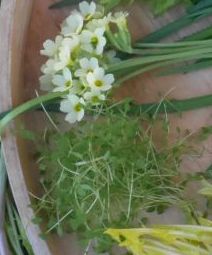
10) HOUSE EDIBLES
A few plants are permanent house plants in my living room, including Cuban Oregano, Lippia dulcis (Sweet Aztec Herb), Lemon Grass, fresh Bay Leaf and Sugar Cane.
The salad dressing: These flavourings were first boiled with freshly harvested sour tasting seed heads of staghorn sumac (Rhus typhina) and a little dried chili. The remaining concentrated water was mixed with olive oil (not home grown although I do have 3 berries ripening on a small tree!) and crushed garlic to make the dressing. Toasted seeds (see below) were mixed in.
11) SEEDS
The final category is seeds, including seed of opium poppy, caraway, dill and invasive Himalayan balsam (Impatiens glandulifera) which were first fried quickly in olive oil and then added to boiled quinoa (my own selection “Stephe”) and Henry quinoa (seed of Good King Henry)
PREPARING THE SALADS
Preparation is simple.
1) Wash and cut (I use scissors for leafy greens) all the ingredients and put in the serving bowl
2) Put aside interesting and colourful ingredients which can be used to decorate the salad
3) Prepare the dressing
4) Mix the dressing with the quinoa/seed mix
5) Mix the dressing mix into the salad
6) Decorate the salad
Some pictures can be seen below of the salads at different stages of preparation


